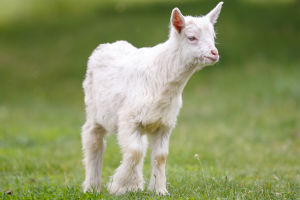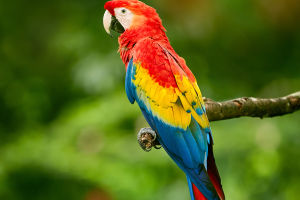Hey Lykkers! Ready to dive into the world of giraffes? These gentle giants of the African savannas are among the most fascinating creatures on Earth, instantly recognizable by their towering height and graceful stature.
But what exactly makes giraffes so unique? Let's explore their key characteristics, from their impressive height to their distinctive spots, and learn what makes them such special animals!
Towering Height: The Tallest Mammal on Earth
One of the most striking features of a giraffe is, of course, its height. Giraffes hold the record as the tallest land mammals, with adult males reaching heights of up to 18 feet (5.5 meters) and females slightly shorter, around 14 feet (4.3 meters). Their long legs alone are typically 6 feet (1.8 meters) tall, allowing them to walk great distances at a steady pace. This towering height gives giraffes an extraordinary advantage in the wild. It allows them to reach high branches in trees, particularly from their favorite acacia trees, that other herbivores cannot access. As a result, giraffes play a crucial role in maintaining the balance of their ecosystems by naturally pruning these trees.
Long Necks: Nature’s Adaptation
Giraffes are most famous for their long necks, which can stretch up to 6 feet in length! While you might expect that they have more neck bones than other mammals, giraffes have the same number of vertebrae—seven, just like humans. The difference is that each vertebra is greatly elongated to give the giraffe its remarkable neck length.
Their long necks serve several important functions:
- Feeding: As mentioned, giraffes can feed on tall trees that other herbivores can't reach.
- Combat: Male giraffes engage in a behavior called "necking," where they use their necks like battering rams to fight other males in competition for mates.
Giraffes 101 | Nat Geo Wild
Video by Nat Geo WILD
Unique Coat Patterns: Nature’s Fingerprint
No two giraffes have the same pattern of spots, making their coats as unique as human fingerprints. These irregular patches can range from light tan to deep brown, helping giraffes blend into the savanna’s landscape and avoid predators. Scientists believe that these spots aren’t just for camouflage—they may also play a role in thermoregulation, helping giraffes dissipate heat in the hot African sun. Blood vessels run close to the skin under the patches, and the lighter parts of the giraffe’s coat may help cool the blood as it circulates.
Long Tongues and Specialized Diet
Giraffes have long, prehensile tongues that can extend up to 18 inches (45 cm)! These flexible tongues are covered in a thick, tough texture, which helps them grab thorny acacia leaves without injury. The dark blue-black color of their tongues is believed to protect them from sunburn as they spend hours feeding. A giraffe’s diet consists mainly of leaves, flowers, and fruits, with acacia leaves being their favorite. They can eat up to 75 pounds (34 kg) of foliage daily to fuel their massive bodies!
Social Behavior: Life in a Tower
Giraffes are known to live in loose social groups called towers. These groups may include males, females, and calves, but giraffe social structures are quite fluid. Individuals can join or leave towers freely, making their group dynamics more flexible than many other animals.
While giraffes are generally peaceful animals, male giraffes can engage in necking competitions for dominance or mating rights. Despite their impressive size and strength, these competitions rarely result in serious injury.
Giraffes and Their Sleep Habits
Believe it or not, giraffes are known to sleep standing up and only for short periods—about 5-30 minutes at a time. In total, they only need 4 to 5 hours of sleep per day! This unusual sleeping pattern helps giraffes stay alert to predators, as they live in environments where lions and other large carnivores roam.
Conservation Status: Protecting the Gentle Giants
Although giraffes are not as endangered as some species, their populations have declined in recent years due to habitat loss, poaching, and human conflict. Certain subspecies of giraffes are classified as vulnerable or even endangered by the International Union for Conservation of Nature (IUCN). Conservation efforts are underway to protect giraffes, with organizations like the Giraffe Conservation Foundation working tirelessly to preserve these incredible creatures and their natural habitats.
Standing Tall in the Animal Kingdom
From their extraordinary height to their gentle nature, giraffes truly stand tall in every sense of the word. These amazing animals have evolved in remarkable ways, from their long necks and specialized tongues to their unique social structures. So, Lykkers, what’s your favorite thing about giraffes? Let us know and celebrate these majestic creatures together!


